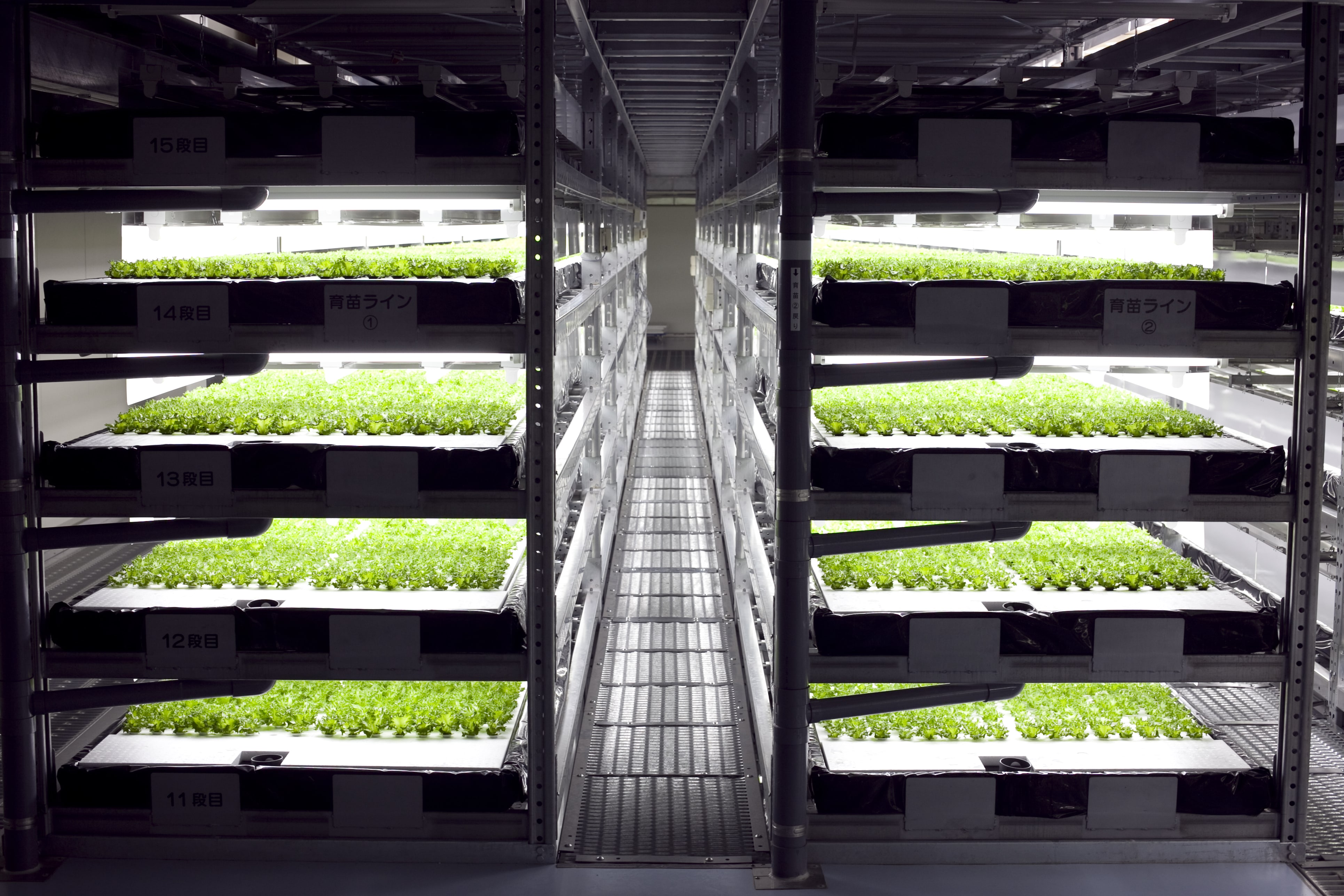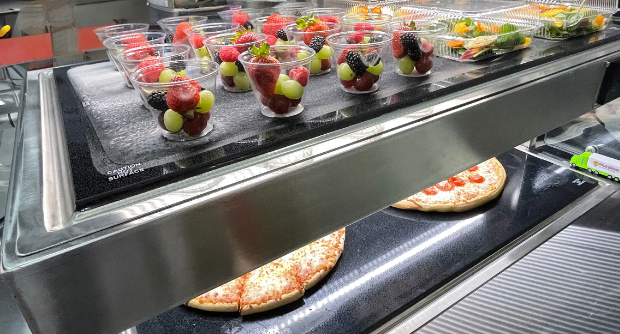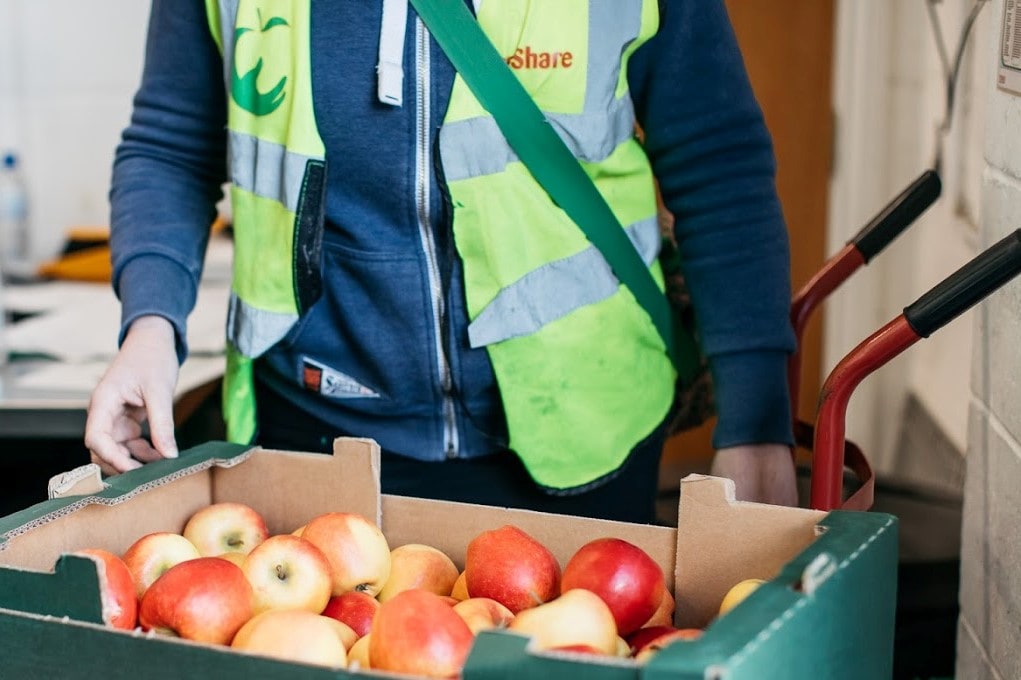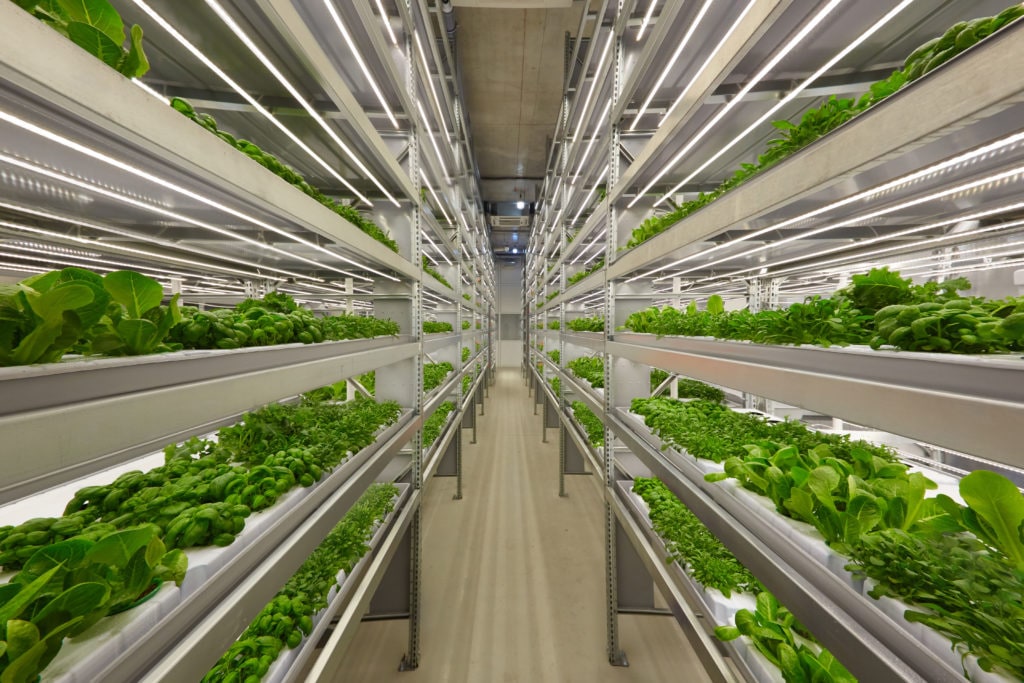
The Spread factory sits beside the highway on a lonely stretch of land outside Kameoka, a former farming community west of Kyoto. Once famous for chestnuts, rice, and fragrant matsutake mushrooms, the area is now more closely associated with another crop: lettuce. Inside the company’s two giant warehouses, factory workers in sterile white suits monitor the conditions in a sealed growing zone, where trays of the leafy vegetable are stacked in columns stretching four stories high.
Spread is Japan’s largest plant factory, a 3,000 sq m indoor-farming facility that turns out 21,000 heads of lettuce a day. Later this year, the company plans to open a second plant equipped with robot technology that will more than double its daily production.
Also known as vertical farms, plant factories like Spread use LED lighting and hydroponics to cultivate crops in highly controlled environments – without sunlight, soil, or pesticides. Hydroponic systems use pumps and filters to circulate a nutrient-dense solution around the roots of each plant, replacing the need for dirt and fertilisers.
In Japan, indoor agriculture has been on the rise ever since 2011, when the earthquake, tsunami and ensuing nuclear disaster that ravaged the northeastern region of Tohoku sparked concerns over food safety. According to data from the Japan Plant Factory association, the number of vertical farms operating in Japan has swelled from 34 in 2009 to 210 in 2016, and the idea is catching on across Asia, in countries such as China, Singapore, and Vietnam.
Indoor farm incentives
Though it sounds like a futuristic dream, the concept of soil-free farming goes back to 1940, when William Frederick Gericke, a professor at the University of California at Berkeley, published the first book about hydroponic agriculture, Complete Guide to Soilless Gardening, which he hoped would lead to world peace.
After the Second World War, the technology was introduced in Japan and used to grow around 1.5 million kg of fresh produce to alleviate shortages. The Japanese began experimenting with closed- environment growing systems in the 1950s. The scarcity of arable land, combined with a shift toward industrialisation, spurred scientists to
find new ways to feed Japan’s rapidly expanding population. By the 1970s, electronics giant Hitachi, became the world’s first company to start test runs with modern plant factory technology.
In recent years, Japan’s agriculture industry has faced even greater problems, as the average age of farmers – estimated at 67 in 2016 – continues to creep up. Climate change and an increase in extreme weather events – such as the severe drought that ruined crops last year have intensified instability, making the farming business even less attractive to the younger generation of workers. In 2008, the Japanese government launched a campaign to promote indoor agriculture.
According to a report by investment firm Newbean Capital, more than half of the country’s indoor farms have received either loans or subsidies.
Spread was an early beneficiary of government support. However, when the company started operating in 2008 it struggled, finally achieving profitability in 2013. “When
our products first appeared in supermarkets, plant-factory-grown vegetables weren’t yet recognised by many. Our sales staff had a hard time selling them to retail stores,” says factory manager Naohiro Oiwa, who oversees the Kameoka plant.
Spread’s representatives took pains to explain the production process, highlighting the factory’s ultra-hygienic conditions and the quality of their crops. Gradually, attitudes have shifted as more vertical farmers have entered the sector: “Now, there are more competing companies and many different retailers selling the products. There
are even supermarkets with special sections devoted to plant-factory- grown vegetables,” Oiwa notes.
Spread sells its four varieties of lettuce to 2,200 supermarkets across Japan, as well as directly to some restaurants and in-flight caterers.
Complex technology
At the new facility, artificial intelligence will automate tasks such as raising seedlings – a move that will cut labour costs by 50% and boost profitability. Spread also aims to lower energy consumption by 30% and reduce water use to a minimum. But while today’s plant factories have become much more efficient, limitations remain. Most of Japan’s plant factories grow only leafy green vegetables; other types of produce require more light and different maintenance systems to create conditions suited to each crop. Such changes require time to develop and major investment.
Mebiol, an agri-tech startup located outside Tokyo, has devised an exciting, low-cost alternative to the plant factory model. Dubbed film farming or dry farming, the system features a thin polymer membrane made of hydrogel – a material typically used in products such as disposable diapers – perforated with nano-sized pores. The technology is complex, but the idea is simple: plants absorb water and nutrients through the film’s tiny holes, which are too small for viruses, bacteria and other microbes to penetrate. The membrane’s powerful filtration properties eliminate the need for the expensive machinery that keeps water circulating in hydroponic systems, and less water is required to operate the farms. “Much of the water in hydroponic farms is lost, but we have near-zero water waste,” says Dr Yuichi Mori, the polymer physicist who invented the film farming technique.
Dry farms can be established anywhere – on city rooftops, in the desert, and even on top of contaminated land. The method is being used to grow intensely sweet tomatoes, peppers and melons in 150 locations around Japan and one in China, as well as on a farm in the middle of the desert in the UAE. Mebiol will export its technology to Europe and other countries in the Middle East later this year. A restaurant in Germany, for example, plans to implement the system on site to offer fresh vegetables harvested to order.
“I believe this technology can increase food security and make the world a better place,” Mori says.
William Frederick Gericke expressed the same sentiment nearly 80 years ago. Utopia still remains a distant vision, but farming advances may help bring us one step closer.
Melinda Joe
Picture: Mebiol, Spread




